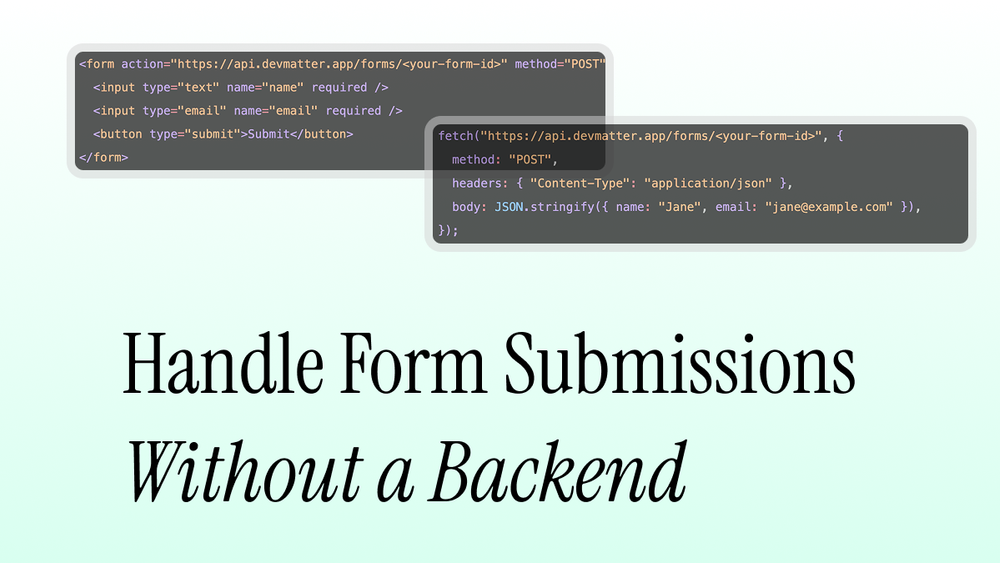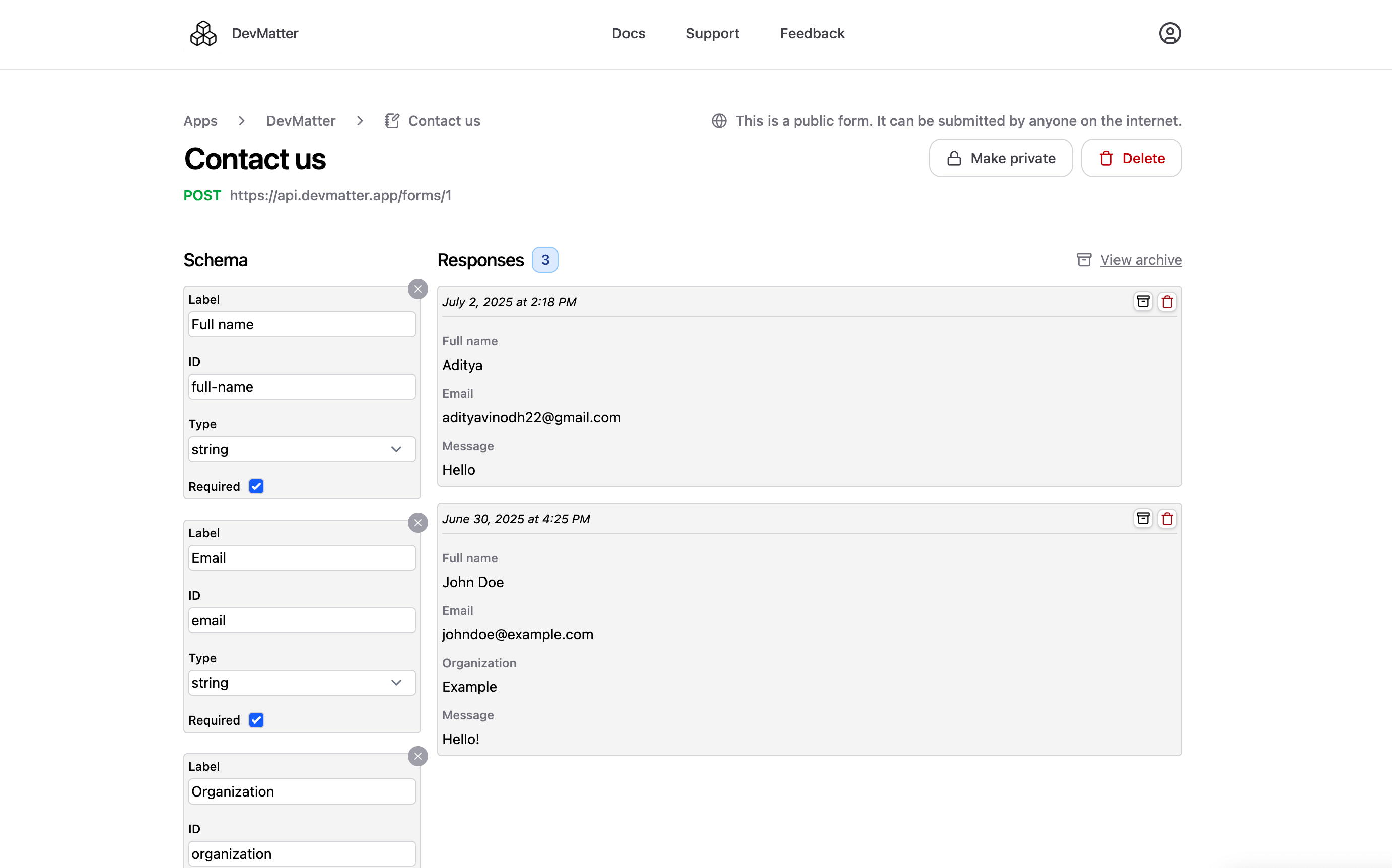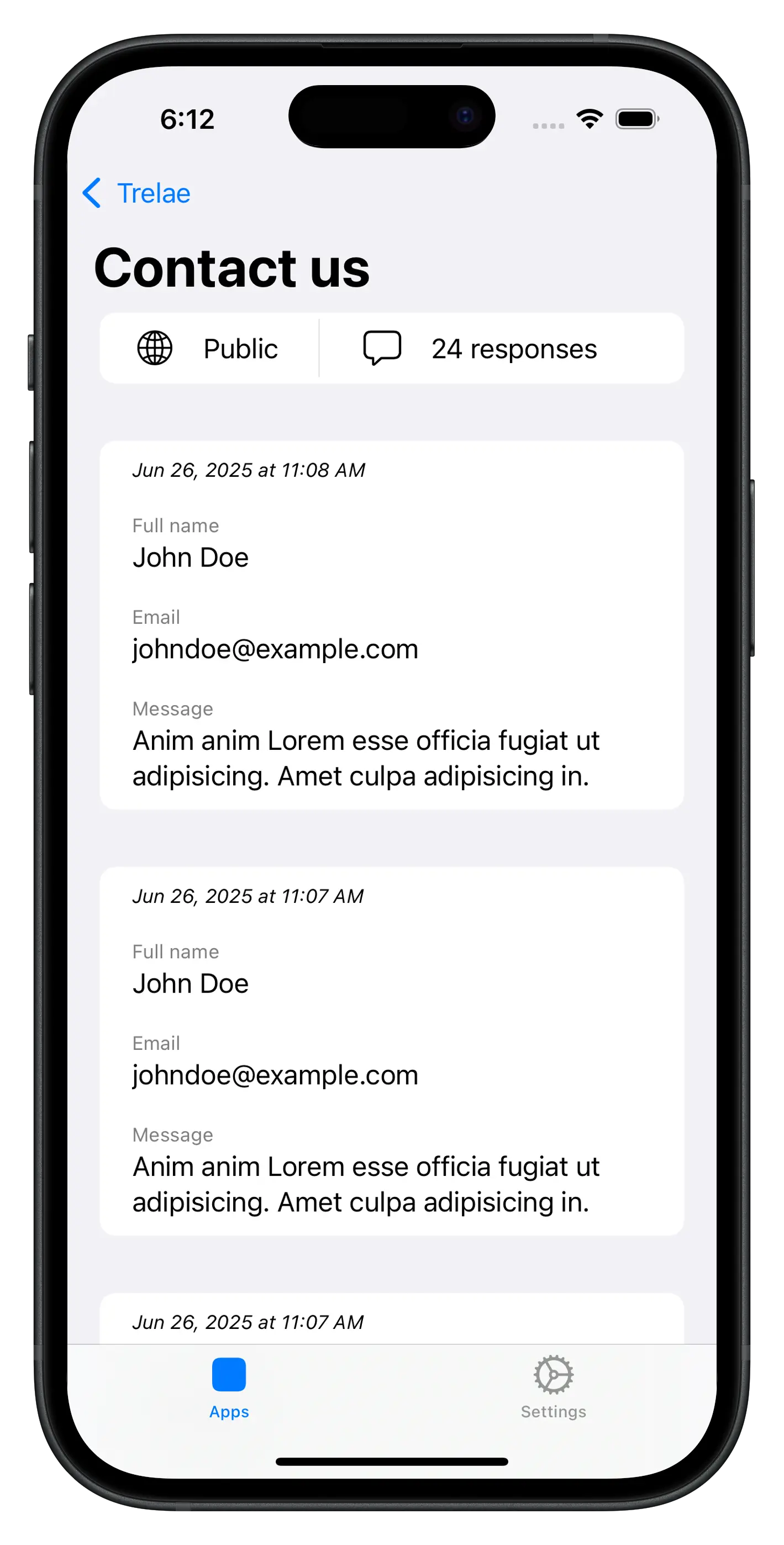Jul 3, 2025 • 2 min read
How to Handle Form Submissions Without a Backend

Aditya
Founder

If you’re building a modern web app or landing page, there’s a good chance you’ve needed a simple way to handle form submissions. But what if you don’t want to spin up a backend just to receive some data?
In this post, we’ll explore your options—and show you one of the easiest ways to get real-time push notifications for form submissions, without relying on email or managing your own server.
✅ Common Options for Handling Form Submissions
Email-Based Form Services
- You’re stuck with email for notifications
- Not ideal for fast-moving teams or mobile-first workflows
- Could end up cluttering your inbox
Slack-Based Form Services
Custom Backend
- Writing and maintaining code
- Handling spam, storage, and performance
- Handling your own notifications service
Third-Party No-Code Tools
There are tools that send form data to your inbox. These are simple to set up but come with drawbacks:
These tools send form data to your Slack channels. They are great if you already have a team that uses Slack. However, it may be hard to read through submissions on a slack channel and manage them efficiently.
You could build your own backend with Node, Python, or PHP, hook it to a database, and deploy it somewhere. This gives you full control, but it also means:
Platforms like Google Forms, Airtable, or Typeform let you set up forms fast. But they limit your UI and often feel clunky when you want deep customization or a native feel.
🚀 A Simpler, Developer-Friendly Alternative: DevMatter
If you want form notifications without email and hate the overhead of backend code, DevMatter might be exactly what you’re looking for.
What it is:
DevMatter is a lightweight form backend built for developers. You design the form however you want—React, Vue, Svelte, plain HTML, anything—and simply POST data to our API.
Key features:
- No backend required: Just send a fetch() request or use a regular HTML form
- Customizable response: Choose between JSON or a redirect after submission
- Push notifications: Get real-time alerts on your phone when someone submits your form
- Mobile app: View submissions and reply on the go
- Developer-first: You own the UI, we just handle the backend plumbing
Example:
<form action="https://api.devmatter.app/forms/<your-form-id>" method="POST">
<input type="text" name="name" required />
<input type="email" name="email" required />
<button type="submit">Submit</button>
</form>Or use javascript:
fetch("https://api.devmatter.app/forms/<your-form-id>", {
method: "POST",
headers: { "Content-Type": "application/json" },
body: JSON.stringify({ name: "Jane", email: "jane@example.com" }),
});Once a user submits a form, you can view the responses from your dashboard

You can also download our mobile app to receive push notifications and view responses over there.

📱 Get Started in Minutes
You can start using DevMatter for free. Just create a form endpoint, integrate it into your frontend, and start collecting data — no backend, no email, no stress.
Final Thoughts
Whether you’re building a feedback form, contact form, or early-access waitlist, you don’t need a full backend to handle form data. And if you’re tired of managing email notifications, try our API and our mobile app for a seamless experience.
Stop overengineering your forms. Start focusing on what matters.
